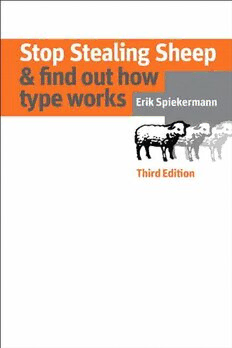
Stop Stealing Sheep & Find Out How Type Works PDF
Preview Stop Stealing Sheep & Find Out How Type Works
Stop Stealing Sheep & find out how type works S Stop Stealing Sheep t Third Edition: Celebrating 20 years in print! o p S “ Anyone who would letterspace lower case t & find out how e would steal sheep.” a l frederic goudy (1865–1947), type designer i n g type works S After two decAdes as one of the world’s Erik Spiekermann is an inform a h Third Edition best-selling books on designing with type – tion architect, type designer e (ff Meta, itc Officina, ff Info, e including editions in Korean, German, Russian, ff Unit, LoType, Berliner Grotesk, p Portuguese, and Polish – Stop Stealing Sheep and many corporate typefaces), & & find out how type works continues to educate, aanrtdic aleusth oonr toyfp neu amnedr toyupso bgoroapksh ya.n d fi Erik Spiekermann n entertain, and enlighten design students and He was founder of MetaDesign, d type lovers around the globe. Germany’s largest design firm, as o well as FontShop, a company for u In this third edition, acclaimed type designer the production and distribution t Erik Spiekermann brings his type classic fully of electronic fonts. He is a board h member of the German Design o up to date on mobile and web typography. He also Council and past president of the w includes scores of new visual examples on how International Society of Typo ty graphic Designers (istd), as well to effectively communicate with type and a full as the International Institute pe selection of new typefaces that are used and for Information Design (iiid). w referenced throughout the book. In 2001, Spiekermann left o MetaDesign and now runs r If you use type – and these days, almost Edenspiekermann with offices k s everyone does – Spiekermann’s engaging, in Berlin, Amsterdam, London, and San Francisco. T common-sense style will help you understand h In 2011, the German Design i how to look at type, work with type, choose Council gave Spiekermann its rd the best typeface for your message, and express highest award for Lifetime E Achievement. That year, he also d yourself more effectively through design. received the tdc Medal and the i Compact, yet rich with anecdotes and visual SoTA award. In 2012, the German ti Art Directors Club gave him o examples, the handbook’s multilayered design its Lifetime Achievement Award. n not only makes for a fun, fast read; it also S p invites exploration, ensuring you learn some- i e thing new each and every time you open it up. k e r m a US $39.99 Canada $41.99 n n ISBN-13: 978-0-321-93428-4 ISBN-10: 0-321-93428-8 5 3 9 9 9 Adobe Press books are Level Beginning/Intermediate published by Peachpit, Category Typography/Graphic Design San Francisco, CA Cover Design Erik Spiekermann www.adobepress.com Sheep Drawing csaimages.com 9 780321 934284 1 Stop Stealing Sheep This page intentionally left blank 3 Stop Stealing Sheep & find out how type works Third Edition Erik Spiekermann Stop Stealing Sheep tRademaRks & find out how type works Adobe, Photoshop, Illustrator, Third Edition PostScript, and CoolType are registered Erik Spiekermann trademarks of Adobe Systems Incorporated in the United States and/or This Adobe Press book is other countries. ClearType is a trade published by Peachpit, mark of Microsoft Corp. All other a division of Pearson Education. trademarks are the property of their respective owners. For the latest on Adobe Press books, go to www.adobepress.com. Many of the designations used by To report errors, please send a note to manufacturers and sellers to dis tinguish errata@peachpit.com. their products are claimed as trademarks. Where those designations appear in Copyright © 2014 by Erik Spiekermann this book, and Peachpit was aware of a trademark claim, the designations appear Acquisitions Editor: Nikki Echler McDonald as requested by the owner of the trade Production Editor: David Van Ness mark. All other product names and Proofer: Emily Wolman services identified throughout this book Indexer: James Minkin are used in editorial fashion only and Cover Design: Erik Spiekermann for the benefit of such companies with no intention of infringement of the Notice of Rights trademark. No such use, or the use of any All rights reserved. No part of this trade name, is intended to convey book may be reproduced or transmitted endorsement or other affiliation with in any form by any means, electronic, this book. mechanical, photocopying, recor ding, or otherwise, without the prior isbN 13: 9780321934284 written permission of the publisher. isbN 10: 0321934288 For information on getting permission for reprints and excerpts, contact 9 8 7 6 5 4 3 2 1 permissions@peachpit.com. Printed and bound Notice of LiabiLity in the United States of America The information in this book is distri buted on an “As Is” basis without warranty. While every precaution has been taken in the preparation of the book, neither the author nor Peachpit shall have any liability to any person or entity with respect to any loss or damage caused or alleged to be caused directly or indirectly by the instructions contained in this book or by the com puter software and hardware products described in it. 5 Page 8 Chapter 1 Type is everywhere. Type exists. It is a fundamental part of our lives. These simple facts are essential to under stan ding how to communicate more effectively. 26 2 What is type? Between type’s past and its future, our present understanding of type is rooted in who we are and how we communicate. Type is a living entit y integrated into society’s moods and trends. 38 3 Looking at type. Training the eye to recognize type begins with familiar elements on the page. Looking at type from the basic shapes to the finest details is the first step toward understanding how type works. 60 4 Type with a purpose. Choosing typefaces for a particular purpose need not be more intimidating than planning your ward robe. Matching an appropriate typeface with the right task is easy. 78 5 Type builds character. Understanding the tone, or feeling, of text is essen tial in determining what typeface to use, and how it might be arranged on the page. 102 6 Types of type. Once understood, basic characteristics of typefaces can eliminate difficulty with typeface identification. Simple distinctions among typefaces are best understood by analogy to human counterparts. 134 7 How it works. Legible, readable type depends on a few basic principles: space between individual letters and around words. Choosing the right typeface for the right text also means using the right spacing. 154 8 Putting it to work. Considering where type is going to live and work will determine its effectiveness. Follow simple rules of placement to create practical page layouts. 172 9 Type on screen. Type on screen used to be the poor sister of type for print. While technical restraints remain, there are no more excuses for choosing an inappropriate typeface for any project that will appear on a screen. 180 10 There is no bad type. Type is a basic element of communication. As the means of communicating changes, type evolves in unique and lively ways. 196 11 Final form. Bibliography, list of typefaces, index. 7 steaLiNg sheep? Letterspacing lower This is a sidebar. As you can see case? Professionals in all trades, whether they be by the small type, the copy here is not for the faint of heart, nor for dentists, carpenters, or nuclear scientists, the casual reader. All the infor communicate in languages that seem secretive mation that might be a little heady for novices is in these narrow and incomprehensible to outsiders; type columns; it is, however, right at designers and typographers are no exception. hand when one becomes infected by one’s first attacks of typomania. Typographic terminology sounds cryptic enough For those who already know some to put off anyone but the most hard thing about type and typography We see so much type that we sometimes nosed typomaniac. The aim of this book and who simply want to check some facts, read some gossip, and stop looking. This is is to clarify the language of typography shake their heads at my opinion not necessarily a bad thing, as in the for people who want to communicate ated comments, this is the space to watch. case of this sign, more effectively with type. which tells us that In 1936, Frederic Goudy was in we may not enter These days people need better New York City to receive an award this street between ways to communicate to more diverse for excellence in type design. eleven and six, nor Upon accepting a certificate, between eleven and audiences. We know from experience he took one look at it and declared six, and certainly that what we have to say is much that “Anyone who would letter not between eleven space black letter would steal and six. easier for others to understand if we sheep.” Goudy actually used put it in the right voice; type is that voice, another expression, one unfit for print. This was an uncomfort the visible language linking writer and reader. able moment for the man sitting With thousands of typefaces available, choosing in the audience who had hand lettered the award certificate. the right one to express even the simplest Mr. Goudy later apologized idea is bewildering to most everyone but prac profusely, claiming that he said that about everything. ticed professionals. You might have noticed that my Familiar images are used in this book to book cover reads “lower case,” show that typography is not an art for the chosen while here it reads “black letter”– two very different things. Lower few, but a powerful tool for anyone who has case letters, as opposed to something to say and needs to say it in print or C APITAL LETTERS, are what you are now reading; black letter on a screen. You will have ample opportunity isn’t seen very often and looks to find out why there are so many typefaces, how like this. they ought to be used, and why more of them I’m not sure how “black letter” in this anecdote got changed are needed every day. to “lower case,” but I’ve always known it to be the latter; which ever way, it makes infinite sense. See the changes By the time you finish this book made to the sign I hope you will understand in the last two and be amused by Mr. Goudy’s decades: the pronouncement. small picture on the right is from this book’s first edition, printed in 1992; the one on its left is from the second edition in 2003. paul watzlawick One cannot not E q u ity communicate. Paul Watzlawick (1921–2007) is author of Pragmatics of Human Communication, a book about the influence of media on peoples’ behavior. “One cannot not c ommunicate” is known as Watzlawick’s First Axiom of Communication. chapter 1 Type is f f U n it T h in everywhere.
The list of books you might like

The Silent Patient

The 48 Laws of Power

Corrupt (Devil's Night #1)

The Strength In Our Scars
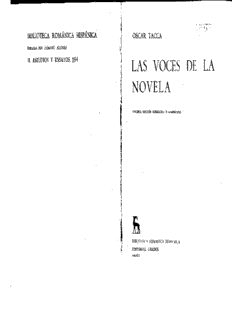
las voces de la novela
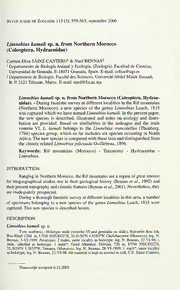
Limnebius kamali sp. n. from Northern Morocco (Coleoptera, Hydraenidae)

NASA Technical Reports Server (NTRS) 20060013221: The Hard X-ray 20-40 keV AGN Luminosity Function

DTIC ADA442900: Assessment of the Effectiveness of the Israel River Ice Control Structure, Lancaster, NH

The Bright Book of Life

Boron Spectral Density and Disorder Broadening in B-doped Diamond

Teoría del conocimiento. Materialismo dialéctico

Journal of Surgical Oncology 1993: Vol 54 Table of Contents

Säuglingspflegefibel

Greek Government Gazette: Part 4, 2006 no. 502
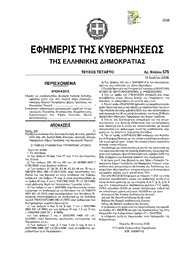
Greek Government Gazette: Part 4, 2006 no. 579
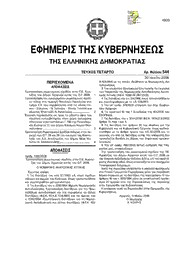
Greek Government Gazette: Part 4, 2006 no. 544
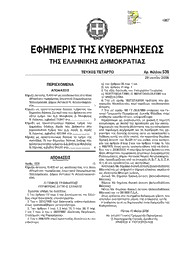
Greek Government Gazette: Part 4, 2006 no. 539
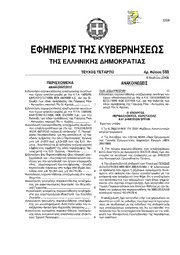
Greek Government Gazette: Part 4, 2006 no. 569

Molecular and Cell Biology Methods for Fungi
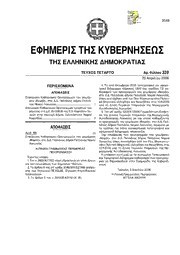
Greek Government Gazette: Part 4, 2006 no. 339
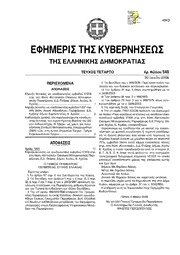
Greek Government Gazette: Part 4, 2006 no. 549



